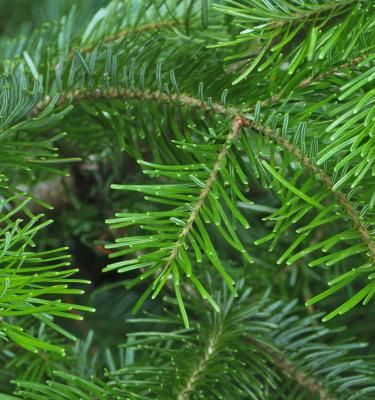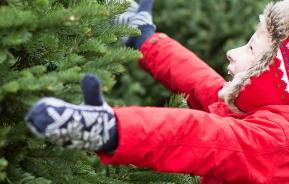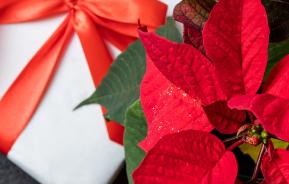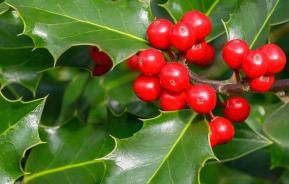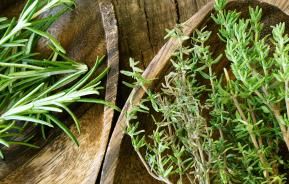Which variety?
Real trees are generally one of three species: fir, pine, or spruce. Most people choose their tree based on cost, needle drop rate, and appearance. Traditionally, the Norwegian spruce was a consistent favourite in the UK, but non-drop varieties like the Nordmann and the aromatic Fraser fir have gained in popularity in recent years.
As a guide, firs and pines tend to hold their needles best, although certain varieties of spruce - the blue spruce, for example - can give them both a run for their money if watered regularly. If you have children and/or pets in your home, it may be worth investing in a pricier variety to ensure it’ll stay lush and green throughout the holiday season.
The same goes if you’re an early decorator, although it’s worth bearing in mind that expecting a cut tree to last longer than 6 weeks in a centrally-heated environment is a tall order.
See our full list of Christmas tree varieties.
Is potted better?
While buying a potted tree seems like a timesaver, there’s a big difference between a tree that’s been grown in a pot and one that’s been cut and then placed into one. While the former is a living tree and can be planted in your garden after the holiday season, placing a cut tree into soil can make it harder for you to ensure it stays adequately watered - and dehydration can lead to increased needle dropping.
A cut tree that hasn’t been potted, on the other hand, gives you a little more control. After purchasing, simply saw another inch or so from the bottom, and then place it in a specially designed stand. Despite the initial outlay of a Christmas tree stand, it’ll make it easier for you to keep your tree watered - and it’s reusable, year after year.
How to select your tree
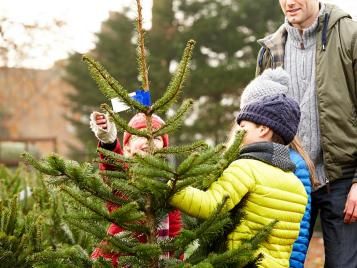
Once you’ve decided on a variety, take some time to really look at the trees on offer. Some sellers will have trees that they’ve already put through a netting machine - a good space-saver for them, but it doesn’t allow the customer to really see what they’re getting.
Make a beeline for trees that haven’t yet been netted, and have a close up look at the appearance of the branches. It’s normal for a new tree to drop a little when they’re moved, but avoid those where the needles or branches are beginning to turn brown.
Caring for your tree
Once you’ve brought your real Christmas tree home, there are a few steps you can take to give it the best chance of lasting until the festivities are over. First up, give some consideration to placement. Avoid placing it near a fire or radiator, and consider ease of access around it. If you have a conservatory, consider placing the tree in there for 24 hours to acclimatise before bringing it into the main house.
Allow enough room between the tree and your curtains to ensure the latter can be opened and closed freely - this will help minimise needle drop. If you have a cat with a track record of Christmas-tree climbing, it might be worth opting for a placement far away from other climbable surfaces. (Some people swear by citronella spray to make the tree less appealing to feline friends.
Disposing of your real Christmas tree
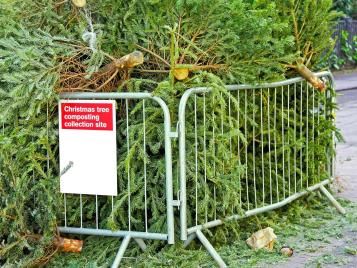
If you opted for a cut tree, you’ll no doubt want to make sure that it’s disposed of in an environmentally-friendly way. Many local councils offer a free recycling service for Christmas trees, collecting them from pick up points in each neighbourhood. Check your council’s website ahead of schedule to ensure you don’t miss the pickup date.
Another alternative is to compost the tree yourself. While pines, firs and spruces can take quite some time to compost, you can speed up the process by cutting the tree up first and removing its needles - gloves recommended!
